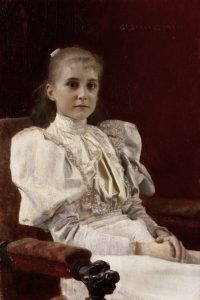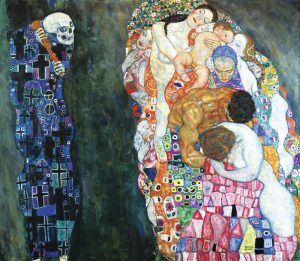Gustav Klimt. Artist of the Century.
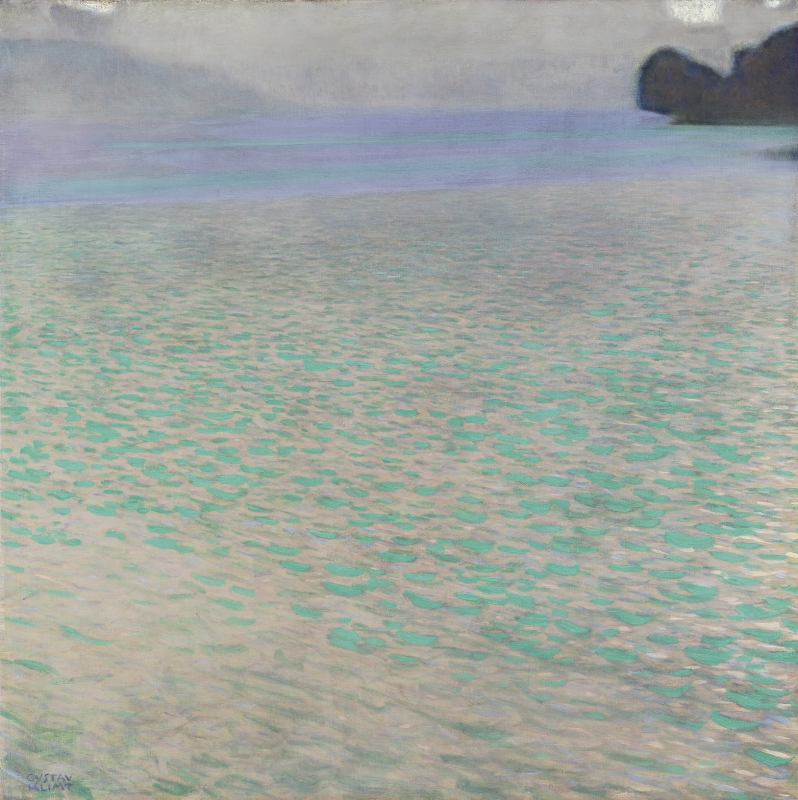
The Leopold Museum presents the Viennese star of Art Nouveau
Within the theme year 2018 under the title “Beauty and the Abyss”, numerous exhibitions in Vienna are dedicated to the four protagonists of that era, who died in 1918: Otto Wagner, Koloman Moser, Egon Schiele and Gustav Klimt are the role models of many of those involved in the upheaval and renewal. They shaped the art scene and Vienna around 1900 in an enduring way. Gustav Klimt underwent a highly impressive career on an artistic level, which made him an “artist of the century” in the truest sense of the word. Until 4th November 2018, the Leopold Museum will be illuminating the artistic reorientation as well as the life and human being Gustav Klimt in an exhibition highly worth seeing.
Honour to whom honour is due
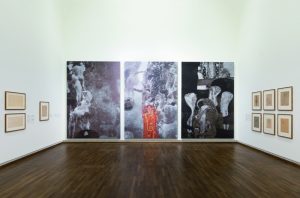
Sight of exhibition 1 | Gustav Klimt. Artist of the Century © Leopold Museum, Vienna, image: Lisa Rastl
100 years after his death, the Leopold Museum honours Gustav Klimt (1862 – 1918) with an exciting exhibition presenting his creative phases in eight thematic areas with around 35 paintings, 90 drawings and numerous photographs and papers from the archives.
The arc spans impressively from Klimt’s beginnings in the Gründerzeit to his artistic paradigm shift and the development of his individual style, as well as his role as a leading figure of the Vienna Secession, to Art Nouveau in his own and to this day fascinating variety.
Klimt’s lively activity as a sought-after portraitist of the wealthy Viennese bourgeoisie is also addressed, as are the erotic and emblematic portrayals of women, the innumerable landscapes and the so typical masterpieces of the master.
From Historicism to Art Nouveau
Before Gustav Klimt appeared as a fighter against the art of historicism, he himself was part of this epoch invoking classical traditions. Klimt, through his academic education, was predestined for the naturalistic embellishment of the new palaces along the Ringstraße. In 1883, Gustav, his brother Ernst Klimt and Franz Matsch joined forces to form the studio community “Künstler-Compagnie”. They benefited from the brisk construction activity and received numerous commissions, such as the ceiling paintings of the two staircases of the Burgtheater.
As the Danube monarchy began going through a crisis there was also a turn in the history of art and politics that culminated in the founding of the Vienna Secession. In 1897 rebellious artists, including Koloman Moser, Carl Moll and Alfred Roller, founded the Association of Austrian Artists under Klimt’s presidency – Secession. In 1898, according to the plans of the architect Joseph Maria Olbrich, the Secession building was constructed to establish its own exhibition centre. The motto “To time its art, to art its freedom” above the entrance until today still stands for the radically liberal approach of the group. The magazine Ver Sacrum (“Holy Spring”), which was designed by such greats as Koloman Moser, Josef Hoffmann and others and to which Gustav Klimt contributed numerous illustrations, served as the mouthpiece of the Secessionists.
Discords and new inspirations
In 1894 Gustav Klimt was commissioned by the Ministry of Education to design three ceiling paintings and ten spandrels for the university auditorium. Klimt presented the three monumental works – philosophy, medicine and jurisprudence – between 1900 and 1903 – and the reactions of critics and professors were predominantly devastating, as Klimt renounced any glorification of the sciences and instead focused on instinct driven naturalness. After about ten years of violent attacks, the artist gave up the assignment in 1905 and repaid his commission to the state.
In 1905, conflicts led to a split between the so-called “stylists” to whom Klimt belonged and the “realists” within the Secession. The reason was primarily the opening of the “Klimt Group” to the Wiener Werkstätte, the School of Applied Arts, and cooperations with the art trade. The group organized one of the most important exhibitions of its time, the1908 Kunstschau, with around 900 exhibits that emphasized the importance of applied art.
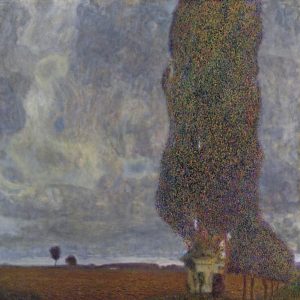
GUSTAV KLIMT, The Large Poplar II (Gathering Storm), 1902/1903 © Leopold Museum, Vienna | Photo: Leopold Museum, Vienna
Around the turn of the century Gustav Klimt began regular summer stays at Attersee in the company of Emilie Flöge and her family. Far away from the city, surrounded by trusted friends, he found relaxation and inspiration at the same time. Klimt’s landscapes were mainly created in nature, occasionally in his Viennese studio based on photographs or postcards. In doing so the artist was concerned with the depiction of nature independent of man, which mirrors a peaceful atmosphere. Gustav Klimt’s close artistic, inspiring and personal relationship with Emilie Flöge is also reflected in the exhibition.
Gustav Klimt is considered the painter of women, and the palette of women types painted is multifaceted: the erotic-fetishized woman, the demonized femme fatale, the allegorical-mystically charged female creature of nature and the idealized society lady. With the latter he made a name for himself as a painter of representative portraits in Vienna at the turn of the century.
The highlight of the exhibition
In the scope of the exhibition, two allegorical monumental works by Klimt enter into a dialogue for the first time: “Tod und Leben” (“Death and Life”) (1910/11, revised 1915/16) and “Die Braut” (“The Bride”) (1917/18). Gustav Klimt had dealt with the cycle of life since the faculty paintings. Both paintings were prepared by Klimt by means of numerous drawings. In addition to his last allegory, a sketchbook has also been preserved, which provides valuable information on the formation process. The expressionistic accents of these two masterpieces make Gustav Klimt the pioneer of modernism in Austria, along with his successors Oskar Kokoschka and Egon Schiele.
The diverse photos of Gustav Klimt, his family and his friends, as well as countless letters and recordings make the exhibition perfect and allow the visitors an insight into the private life of the world artist. The excerpts and quotations on the walls are particularly nice. One might almost think to hear Gustav Klimt himself speak.
My conclusion: In the current theme year you can’t ignore Klimt. With every new exhibition one thinks: What else can be new? – Yet, an artist of the century like Gustav Klimt probably still has more to offer, which is guaranteed by the countless works, of which you can’t get enough and which raise new aspects each time – or simply invite you to “sink into it” (that’s how I feel about the picture “Am Attersee” (“At Attersee”)). The Leopold Museum has once again put together an exciting and professional exhibition that should not be missed.
GUSTAV KLIMT
Artist of the Century
Website: https://www.leopoldmuseum.org/en/exhibitions/99/gustav-klimt
until 4th November 2018
at
Leopold Museum
MuseumsQuartier Vienna
Museumsplatz 1
1070 Vienna
https://www.leopoldmuseum.org/en
Open daily from 10am – 6pm, Thursdays until 9pm
From September- closed Tuesdays
Regular admission: € 13 per person
Data and image sources: Copyright © Leopold Museum.
Many thanks for the kind support.
Start photo: GUSTAV KLIMT, On Lake Attersee, 1900 © Leopold Museum, Vienna.


